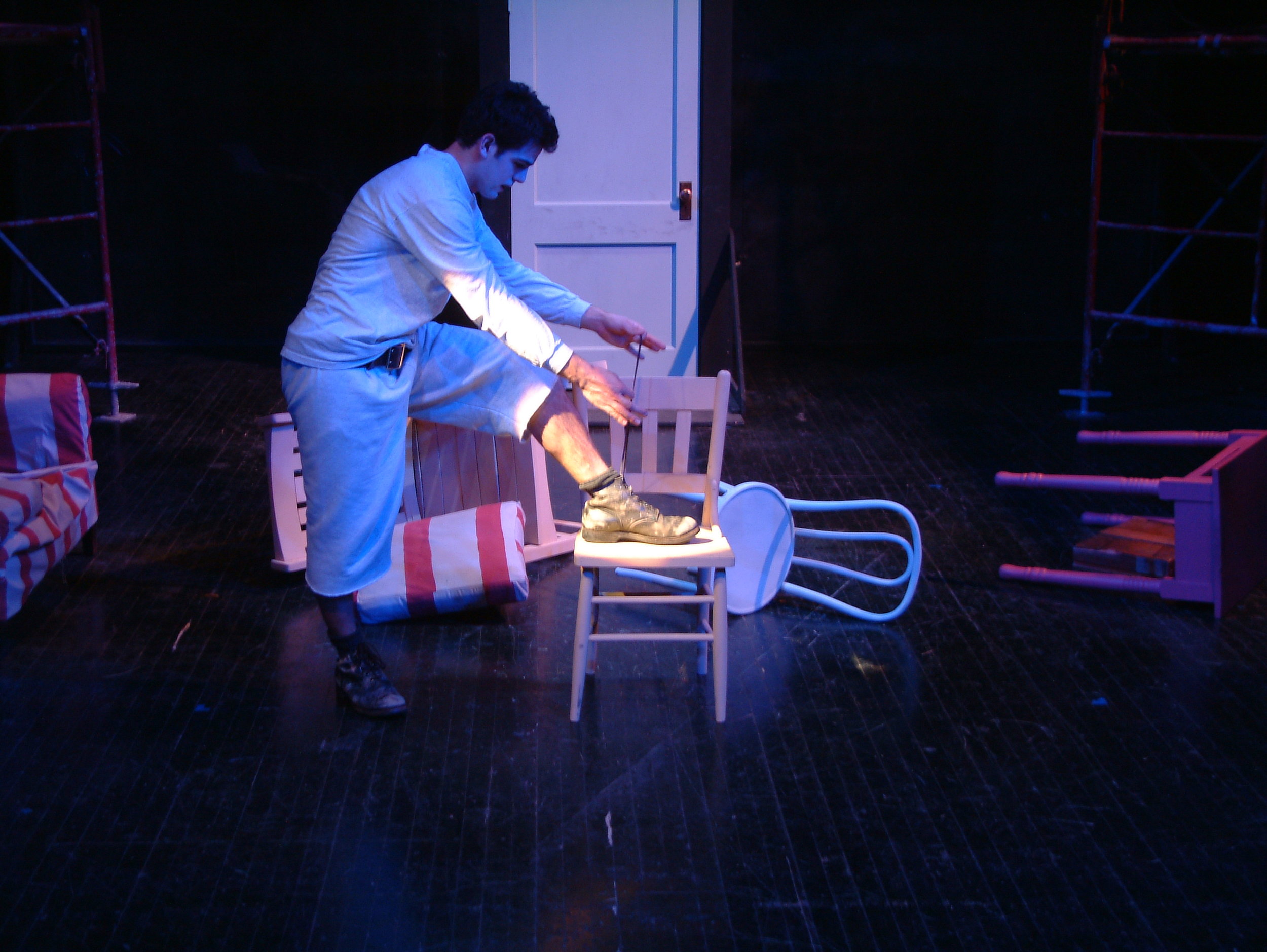



Kaspar
Your theatre experience this evening is the culmination of weeks of exploratory improvisation with Handke’s text and the characters of Kaspar. It has proven to be an exciting and stretching process for all of us: actors, directors and designers. Our investigation has required us to set aside many of our preconceived ideas of what we expect theatre to be and how a typical play structure should work. Handke believes that the narrative that joins the story together should not be imposed upon an audience, but should stimulate the audience to formulate their own storyline to accompany the action of the play.
Handke has loosely based the lead character, Kaspar, on the historic figure of Kaspar Hauser who was found wandering the streets of Nuremberg, Germany in 1828. He had been kidnapped at age 3 and placed in a dark cell with no light or human contact for 15 years. Upon his mysterious release, he knew only one sentence, which he repeated randomly with no apparent understanding of its meaning. This tabula rasa character is reborn in his play totally naïve and vulnerable, unaware of self identity or the meaning of any language. “I want to be a person like somebody else was once,” is the only line he clings to. He has no idea what it means or how to use it properly. It is his only identity.
As the prompters begin to slowly tear this fragile identity from him and replace it with their language of appropriate and necessary order, we are forced to consider our own developmental process and the subtle forces that have formed us. The power of language is a potent force of manipulation . Handke encourages us to explore the place of language in our lives as a necessary but often sinister influence on our realization of self and our understanding of the world. Handke plays with language to find its boundaries and meanings- “Discovering its glories, its torments, surprises - and in the process cement forever the relationship between objects and words.”
As we objectify our world, naming objects and experiences and putting them in comfortable and orderly categories, life becomes easier and more predictable. Once we have turned everything and everyone into objects, they become safe and knowable; we can play with them at will, or set them aside in neat little boxes and move on to the next. Creativity, individuality, ambiguity, and diversity appear to be the enemy of the system that requires that one never color outside the lines. It becomes the ultimate “tragicomic story of socialization and civilization.”
we hope that you will indulge yourself in this journey to a place you may not have been before, and allow us to bring you back to your seats better for the trip.
